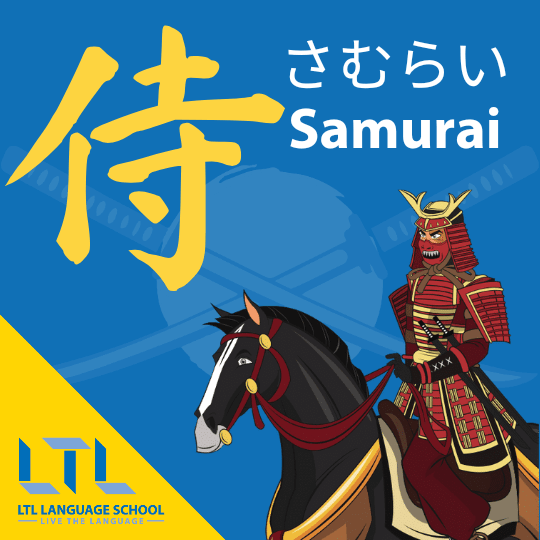The Art of Stealth and Bushido || Samurai and Ninjas: Who Were They REALLY?
From Shadows to Swords: Uncovering the History of Ninjas and Samurai in Japan

For non-Japanese folk, the terms samurai and ninja are very familiar, and we all have our own impression about who they were and what they looked like.
For many of us, that mental image has been shaped, in part, by movies and TV.
In the case of samarais, that might be Tom Cruise’s The Last Samurai (2003) or the critically acclaimed Seven Samurai (1954).
For ninjas, that could be anything from Hollywood’s “ninja craze” in the 70s and 80s, such as Enter the Dragon (1973) or even (we won’t judge) Teenage Mutant Ninja Turtles.
But what is the REAL story behind these Japanese cultural icons?
Who were ninjas and samurais really? What’s the difference? And what is their relation to one another? We’re here to answer all those questions and more!
In this blog, we’ll unlock the secrets of the samurai, the noble warriors whose code of Bushido defined their way of life. Then, we’ll venture into the shadowy world of the ninjas, the enigmatic masters of stealth and espionage.
So, grab your sword, put on your ninja mask, and let’s embark on a thrilling journey back in time as we uncover the secrets and legends of these iconic warriors.
Samurai and Ninjas || History of the Samurai
Samurai and Ninjas || Famous Samurai
Samurai and Ninjas || The History of Ninjas
Samurai and Ninjas || Famous Ninjas
Samurai and Ninjas || FAQs
Samurai: A History
ORIGIN OF THE SAMURAI
The samurai, written with the Kanji 侍, also referred to as bushi 武士 (meaning “warrior”), were members of the warrior-nobility class in feudal Japan.

They dominated the Japanese government from the 12th to the 19th century (that’s 700 years…!)
Despite existing for many years prior, the samurai entered government in 1185, at the establishment of the Kamakura Shogunate.
The first Shogun, i.e., the leader of the Samurai and the Shogunate, was Minamoto Yoritomo 源頼朝 (1147-1199).
- 侍; 武士(さむらい;ぶし)samurai; bushi – samurai
- 幕府(ばくふ)bakufu – shogunate
- 将軍(しょうぐん)shougun – shogun
FUN FACT! The term “shogunate,” or bakufu 幕府 in Japanese, literally means “tent government” in English.
The Samurai were a highly disciplined class, who followed a strict, but unwritten, code of conduct, known as Bushidou 武士道, or “the way of the warrior,” which valued bravery, stoicism and honor above all else.
And who did they honor the most?
Each samurai was absolutely loyal to their daimyo 大名, or master (usually a feudal lord or government official), and vowed to defend them to the death.

How to Learn Hiragana (Quickly) // 7 Terrific Tips To Success
How to Learn Hiragana? It might seem difficult but Hiragana can be understood within a few hours. Follow these tips for success and start reading Hiragana.
TOKUGAWA PERIOD (1603-1867)
The Tokugawa, or Edo, period (1603-1867) was a crucial period for the samurai.
In fact, most depictions you’ll see of samurai in popular culture, particularly films, will be set during the Tokugawa period!
Society during the Tokugawa period was based on a strict hierarchy, with the samurai as one of the most powerful and influential groups in the entire country.
However, their influence began to decrease in the 19th century, particularly due to Japan’s rapid urbanization.
The samurai ultimately lost their high positions and rank during the Meiji Restoration (1868) with the abolition of the feudal system.
Famous Samurai
There are many famous samurai that have existed throughout history. Some you might even recognize…
Hattori Hanzō 服部半蔵 (1542-1597)
Hattori Hanzō was a famous samurai from the Sengoku, or “Warring States,” Period in Japanese history.
He was also a ninja. How was he both, you ask? We’ll get to that later…
Hanzō is known for saving the life of Tokugawa Ieyasu (1543-1616), the first shogun of the Tokugawa Period, and helped him unite Japan after over 100 years of civil war.
Does his name sound familiar?
The west gate in the Tokyo Imperial Palace is named after Hanzō, i.e., the Hanzōmon 半蔵門, and the Hanzōmon Line on the Tokyo Metro is named after that gate!
If you’ve seen the movie Kill Bill: Vol. 1 starring Uma Thurman, you may also recognize his name…
In Kill Bill, The Bride travels to Okinawa to obtain a sword from a legendary swordsmith named after the famous samurai.
Takeda Shingen 武田信玄 (1521-1573)
Also from the Sengoku Period, Takeda Shingen was a samurai and daimyo, most famous for his battles with the great warrior Uesugi Kenshin (1530-1578).
The stories of these two famous rivals are legendary, and are widely celebrated in Japanese folklore.
Takeda Shingen has been the subject of various Japanese dramas and movies, as well as art and theatre.
The most famous of these interpretations is the 1980 film Kagemusha 影武者, or “The Shadow Warrior,” which won the Palme d’Or at the Cannes Film Festival in 1980.
👉 Shingen’s legacy is also celebrated in the Shingen-ko Festival, which takes places annuals in Kofu City, Yamanashi Prefecture.
Every year, there is a reenactment of Shingen’s Koshu Battalion, and the part of Takeda Shingen is usually played by a famous Japanese actor.
In 2013, Shingen was played by actor Ken Matsudaira.
In 2012, the event made it into the Guinness World Records for being the “largest gathering of samurai” in the world!
Saigō Takamori 西鄕隆盛 (1828-1877)
Saigō Takamori was a samurai famous for his role in the Satsuma Rebellion of 1877, which is considered the final revolt of the samurais against the Meiji government.
Takamori is often referred to as “the last samurai,” and was considered by many as a paragon of samurai values.
In response to his deep popularity among the people, he was posthumously pardoned in 1889 by the Meiji government for his role in the rebellion.
Takamori and the Satsuma Rebellion serve as inspiration for the 2003 film The Last Samurai. The character Lord Moritsugu Katsumoto is based on Saigō Takamori and is played by actor Ken Watanabe.

Japanese TV Shows (On Netflix) 📺 Ten TV Shows To Binge On
Today you are going to discover the best Japanese TV Shows you need to watch now. Every single one of these is available on Netflix for you to enjoy!
The History of the Ninja
First of all, before we get into the ins-and-outs of the history of the ninja, let’s talk about the difference between samurais and ninjas…

We mentioned earlier that Hattori Hanzō was both a ninja and a samurai…
Ninjas, or 忍者 in Kanji (often read and referred to as shinobi), were trained mercenaries and assassins, and although the covert methods of a ninja were considered by some to be below the values of a samurai, there were many samurai who trained as ninjas!
- 忍者; 忍び(にんじゃ;しのび)ninja; shinobi – ninja
- 忍術(にんじゅつ)ninjutsu – ninjutsu (i.e., the martial arts tactics used by ninjas)
Ninjas did not follow the Bushidou, and in their fighting style, they utilized the skills of disguise and deception.
They dressed in black as this would allow them to move around unseen in the dead of night.
So, essentially, samurai was a social class of warrior-nobility, while being ninja was a profession that one trained for. Therefore, in some cases, one could be both and samurai and a ninja!
EARLY HISTORY
Although ninjas were not around as long as the samurai, they still played a very important role in Japanese history and culture.
The history of the ninja goes back to the 15th century, although we can assume that assassins akin to ninjas existed prior.
As samurai were expected to uphold a strict code of conduct, there became a demand for fighters and warriors who would be able to perform more “unethical” deeds.
The Iga and Kōga were the most famous ninja clans, and they established villages devoted to the professional training of ninjas. Throughout the late 15th to late 16th centuries, Iga and Kōga ninjas were actively hired by daimyos (samurai feudal lords).
The last mention of ninjas being involved in wars was following the Shimabara Rebellion in 1637-38, however we know their activities continued after that.
TOKUGAWA PERIOD (1603-1867)
During the Tokugawa Period, ninjas continued to mainly work as security guards for samurais and members of the shogunate.
The art of ninjustu 忍術 continued to be taught at different schools across Japan, including the Iga and Kōga. The art of ninjutsu was controlled by the so-called “53 families.”
In fact, the last headmaster of the Kōga school was Fujita Seiko (1898-1966), suggesting that ninjas continued to exist in the 20th century!
However, in his 1955 autobiography, Seiko wrote that he would not pass on the school.
Famous Ninjas
Unlike samurais, the names and stories of individual ninjas are mostly unknown. This is because their jobs and missions were secret, and as such, there are few relevant historical documents that exist.
Some famed ninjas include Hattori Hanzō (who we mentioned in “Famous Samurai”) and Katō Danzō.
Katō Danzō 加藤段蔵 (c. 1503 – 1569)
Katō Danzō, nicknamed “Flying Kato,” was a ninja active in the Sengoku Period of Japan.
There were many legends surrounding Danzō’s special abilities as a ninja, including that he could fly and perform magic.
Do you remember Uesugi Kenshin who we mentioned earlier (psst… he was the rival of samurai Takeda Shingen)? Danzō had actually worked for Kenshin, performing many undercover deeds on his behalf.
However, Kenshin eventually became distrustful of Danzō, and after Kenshin’s followers plotted to have him killed, Danzō tried to defect to the service of Takeda Shingen.
Yet, Shingen believed that Danzō was a double agent, and had him killed in 1569.
Through their captivating stories and enduring legacies, ninjas and samurai continue to captivate our imaginations and remind us of the unconquerable spirit of Japan’s legendary warriors.
Any other aspects of Japanese history you want to know about? Let us know!
Samurai and Ninjas || FAQs
What is the difference between a samurai and a ninja?
Samurais were members of the warrior-nobility class in feudal Japan. They were highly disciplines, and valued valued bravery, stoicism and honor above all else.
Ninjas were trained mercenaries and assassins, who utilized the skills of disguise and deception in warfare.
Was it possible for someone to be both a samurai and a ninja?
The simple answer is yes. Samurai was a social class of warrior-nobility, while being ninja was a profession that one trained for.
A famous figure in Japanese history who was both a samurai and a ninja was Hattori Hanzō.
Was there really a “last samurai”?
Although the film The Last Samurai is a work of fiction, the character of the last samurai in the film is based on real samurai, Saigō Takamori.
Takamori was famous for participating in the final revolt again the Meiji government in the late 19th century and is thus sometimes referred to as “the last samurai”
Where did ninjas train?
Ninjas trained in the art of ninjutsu at different schools around the country. The most famous of these schools were led by the Iga and Kōga clans.
Want More From LTL?
WANT TO LEARN JAPANESE? Check out our online Japanese courses here.
We offer a 7-day free trial to all new students where you can study 24/7.
What about studying Japanese in Japan instead? We’ve got your back. Our Japanese courses in Tokyo can either be taken in small groups of no more than 5 students or individually for a more tailored experience.
We even offer incredible homestay experiences in Tokyo as well.
Come and be a part of this amazing community.









